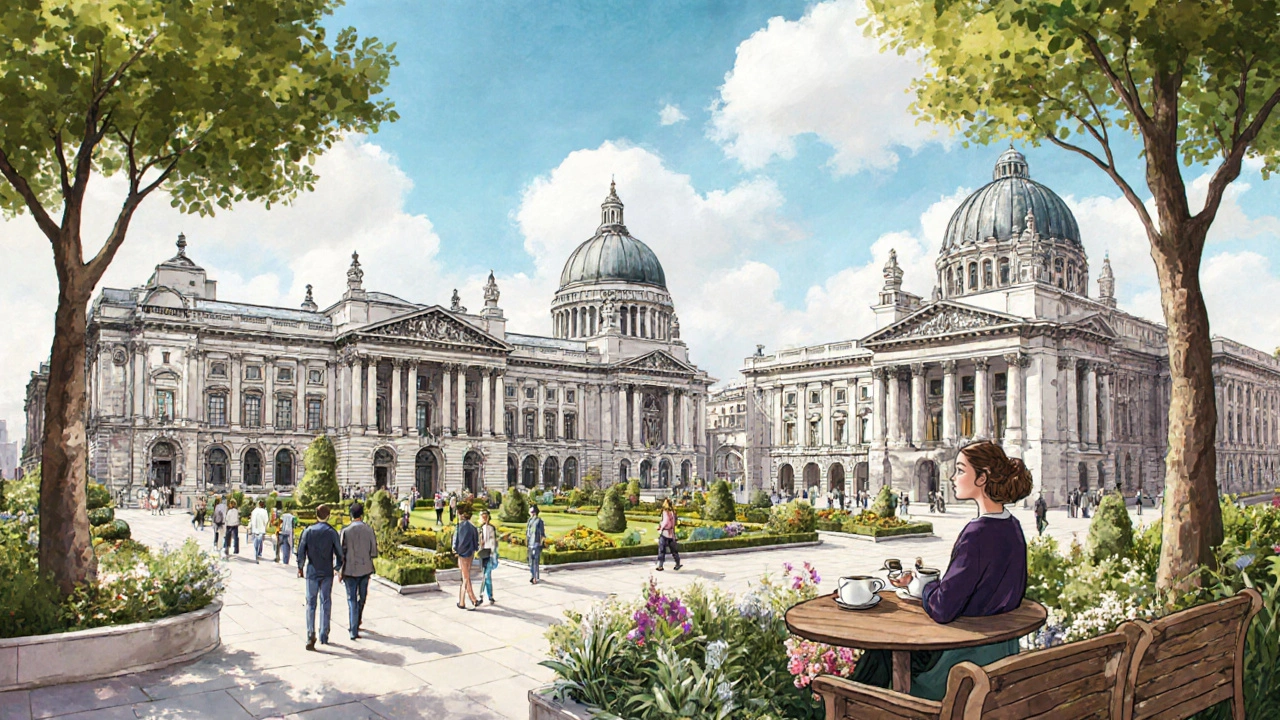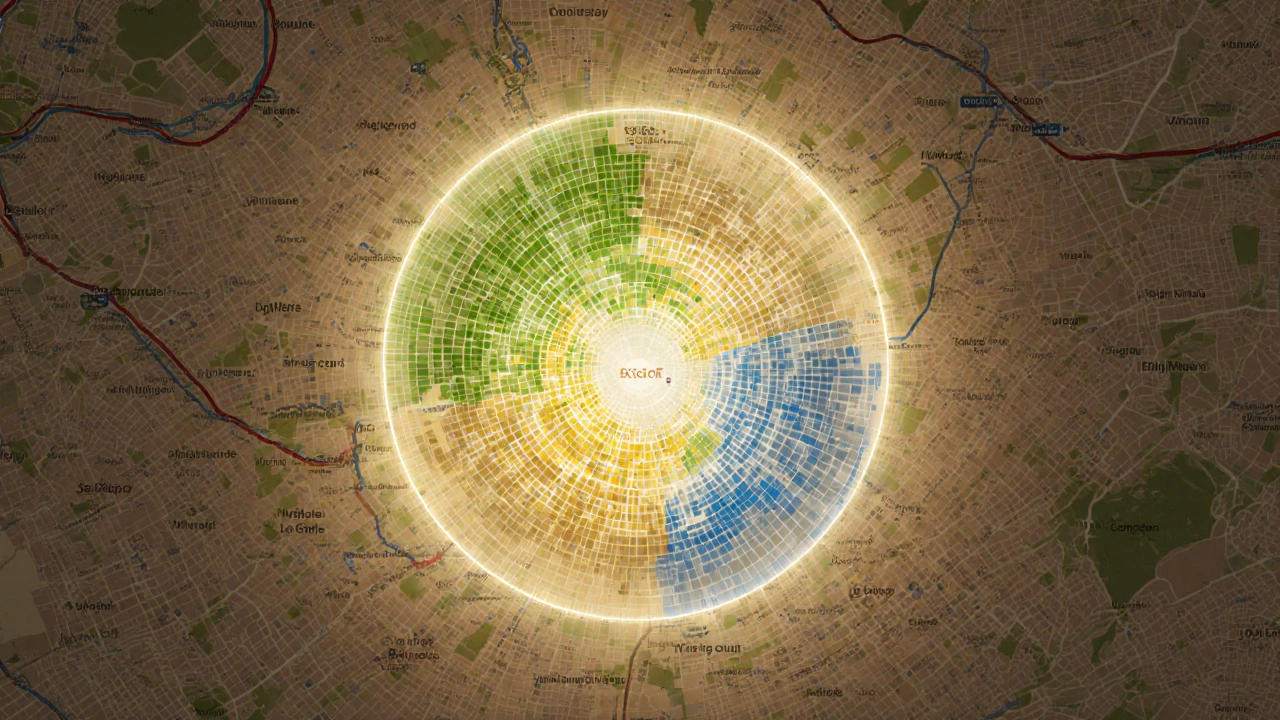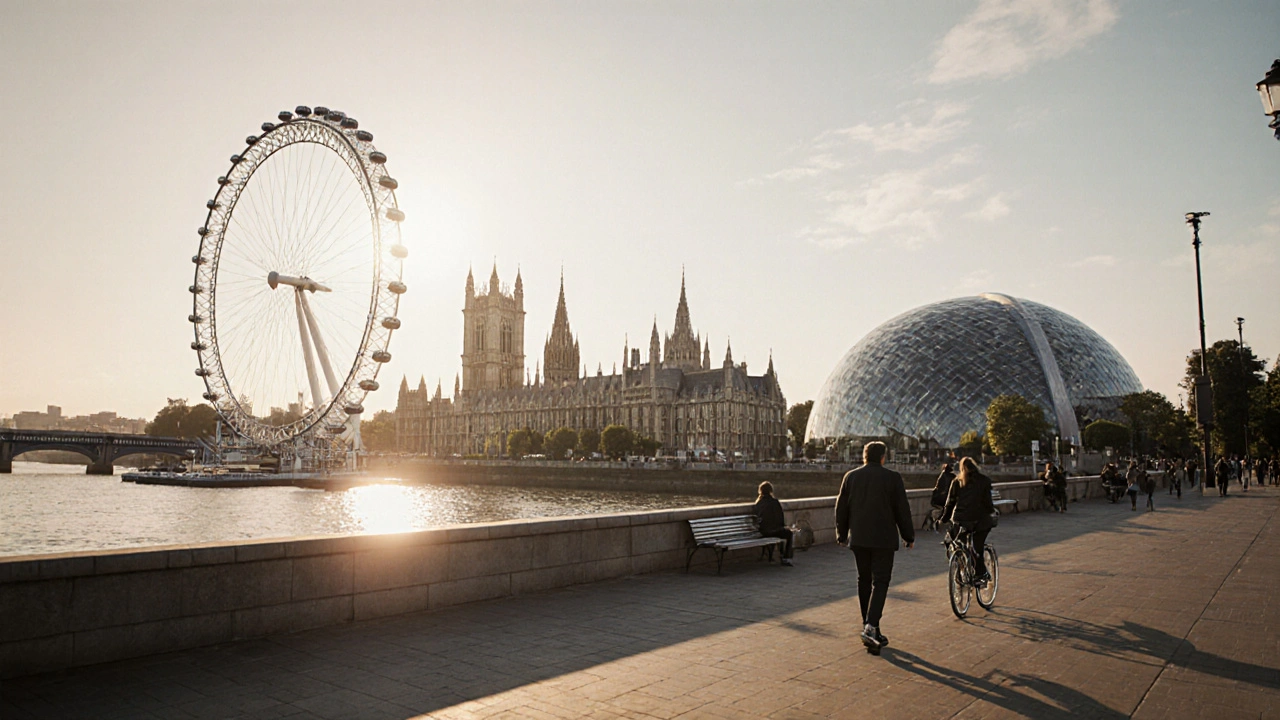If you’ve ever stood at King’s Cross wondering which Tube line to take next, you’re not alone. London’s size and complexity can feel overwhelming-until you learn how its zones and clustered sights actually work together. The secret isn’t just knowing where to go. It’s knowing how to group your stops so you’re not wasting hours on trains between places that are close in reality but far apart on the map.
Understand London’s Zone System
London’s public transport is divided into nine concentric zones, numbered 1 through 9. Zone 1 is the center-where you’ll find Big Ben, the London Eye, and the British Museum. Zone 2 wraps around it, covering areas like Camden, Notting Hill, and Shoreditch. By Zone 4, you’re hitting places like Richmond and Wembley. Zones 5-9 are mostly outer suburbs and airports.
Here’s the thing: a single-day Travelcard covering Zones 1-2 costs £14.40. A Zone 1-4 pass? £20.50. If you’re hopping from Zone 1 to Zone 6 just to see one attraction, you’re paying more for transport than for entry. That’s why clustering matters.
Most visitors stick to Zones 1-3. That’s where 80% of the major sights live. You don’t need to go beyond Zone 4 unless you’re chasing something specific-like Kew Gardens or the Tower of London’s sister site, the Tower Bridge Exhibition. Even then, you can plan it smartly.
Cluster 1: The Historic Core (Zone 1)
This is the heart of London. If you’re only here for three days, this cluster should be your anchor. Everything here is walkable or a short Tube ride apart.
- Westminster: Houses the Houses of Parliament, Big Ben, and Westminster Abbey. All within a 10-minute walk.
- Whitehall: Just east of Westminster-home to 10 Downing Street and the Cenotaph.
- Trafalgar Square: The cultural hub. National Gallery is here, and it’s free.
- Covent Garden: A 15-minute walk or one stop on the Northern Line. Great for street performers, boutiques, and the Royal Opera House.
- London Eye and South Bank: Walk along the Thames from Westminster to the London Eye, then keep going to Tate Modern. You’ll pass Shakespeare’s Globe and the Millennium Bridge-all in one scenic stroll.
You can hit all of these in a single day without needing a single Tube ride. Just wear good shoes. Most of these spots are free, too. The only paid entries are Westminster Abbey (£27) and the London Eye (£33).
Cluster 2: Royal & Museum Row (Zone 1-2 Border)
This cluster sits between Zone 1 and 2, centered around South Kensington. It’s the museum capital of the world-and you can hit three world-class institutions in under two hours.
- Natural History Museum: Dinosaurs, volcanoes, and a giant blue whale. Free entry.
- Science Museum: Interactive exhibits, space capsules, and a flight simulator. Also free.
- V&A Museum: Fashion, design, and decorative arts. Free entry, but special exhibitions cost £18.
All three are within a 5-minute walk of each other. The nearest Tube is South Kensington (District, Circle, Piccadilly lines). If you’re doing this cluster, plan for 4-5 hours. You could easily spend a whole day here, especially if you’re into design or science.
Pro tip: The V&A has a rooftop café with views of the gardens. Grab a coffee and rest your feet after the museums.
Cluster 3: East End & Street Culture (Zone 2)
Forget the postcard London. East London is where the city’s real pulse lives. This cluster is all about street art, markets, and local flavor.
- Shoreditch: Start here. Brick Lane’s curry houses, vintage shops, and murals by Banksy (yes, they’re still there).
- Spitalfields Market: Open daily, food stalls, handmade jewelry, and craft beer. Less touristy than Camden.
- London Bridge City: Walk to Borough Market from here-it’s one of the best food markets in Europe. Try the oysters, the cheese, and the sticky toffee pudding.
- Canary Wharf: A 10-minute Tube ride from London Bridge. Modern skyline, free art installations, and the largest indoor shopping center in London.
This cluster is perfect for lunch or dinner. You’ll eat better and cheaper here than in tourist zones. Borough Market alone has over 100 stalls. Plan to spend at least 2-3 hours. Bring cash-some vendors don’t take cards.

Cluster 4: Royal Parks & River Views (Zone 2)
If you want green space and quiet, this cluster delivers. It’s less crowded than the museums but just as beautiful.
- Kensington Gardens: Adjacent to Hyde Park. Home to the Albert Memorial and the Serpentine Gallery.
- Hyde Park: Rent a paddleboat on the Serpentine Lake. Or just sit under a tree with a sandwich from a local deli.
- Chelsea Physic Garden: A hidden gem. One of the oldest botanical gardens in London. Entry is £12, but it’s worth it.
- Hampton Court Palace: A 30-minute train ride from Waterloo (Zone 1) to Zone 6. If you’re into Tudor history, this is the place. The maze is famous, and the kitchens are massive.
You can do Kensington Gardens and Hyde Park in a single afternoon. Hampton Court is a half-day trip. If you’re staying in Zone 1, take the train from Waterloo to Hampton Court-it’s direct, scenic, and costs £11.90 off-peak.
Cluster 5: North London & Hidden Gems (Zone 2-3)
Most tourists skip this area. That’s your advantage.
- Camden Town: Famous for its market, but don’t just go for the tattoo shops. The food hall has vegan dumplings, Jamaican jerk chicken, and craft cider.
- Primrose Hill: A 10-minute walk from Camden. The best panoramic view of London’s skyline. Go at sunset.
- Highgate Cemetery: Where Karl Marx is buried. Gothic arches, overgrown paths, and ghost stories. Guided tours are £12.
- Victoria & Albert Museum of Childhood: In Bethnal Green. A free museum full of dolls, toys, and vintage games. Perfect for families.
Camden and Primrose Hill are easy to hit together. Highgate requires a 20-minute Tube ride from Camden (Northern Line to Highgate). It’s worth it if you like history with a side of mystery.
Plan Your Days Like a Local
Here’s how to actually use this clustering system:
- Day 1: Historic Core (Zone 1). Walk everything. No Tube needed.
- Day 2: Royal & Museum Row (Zone 1-2). Start at South Kensington. End with coffee at the V&A.
- Day 3: East End (Zone 2). Lunch at Borough Market, then Shoreditch for street art.
- Day 4: Royal Parks (Zone 2). Hyde Park in the morning, Kensington Gardens in the afternoon.
- Day 5: North London (Zone 2-3). Camden Market, then Primrose Hill for sunset.
You don’t need to rush. London rewards slow days. If you’re tired, skip a cluster. It’s better to see three places well than five badly.

Save Money, Save Time
Use an Oyster Card or contactless payment. Don’t buy paper tickets. They’re more expensive and slower. A daily cap in Zones 1-2 is £8.50. In Zones 1-3, it’s £13.20. That’s cheaper than any day pass.
Most major sights are free: the British Museum, Tate Modern, National Gallery, Science Museum, Natural History Museum. You only pay for the London Eye, Westminster Abbey, and a few palace tours.
Book tickets online for paid attractions. Skip the lines. You’ll save at least 45 minutes per attraction.
What to Avoid
Don’t try to do everything. Don’t jump from Buckingham Palace to the Tower of London in one day. They’re 4 miles apart. That’s a 30-minute Tube ride each way-plus waiting time.
Don’t rely on Uber or taxis. Traffic in central London is brutal. The Tube is faster, cheaper, and more reliable.
Don’t assume all attractions open at 9 a.m. Some museums open at 10. Check opening times. The British Museum closes at 5:30 p.m., but the National Gallery closes at 6 p.m.
Final Tip: Use the Tube Map Like a Tool
Download the TfL Go app. It shows real-time Tube delays, station exits, and walking times. Use it to confirm which exit gets you closest to your destination. For example, exiting at Embankment Station for the London Eye? Take the exit marked ‘Victoria Embankment.’ It’s 2 minutes to the wheel. Exit at the wrong one? You’re walking 15 minutes the long way.
London’s magic isn’t in seeing every landmark. It’s in feeling the rhythm of the city-walking its streets, eating its food, and moving between clusters with ease. Plan smart. Move slow. Enjoy the view.
What’s the best way to get around London for a first-time visitor?
Use an Oyster Card or contactless payment card. It’s the cheapest and fastest way to use the Tube, buses, and Overground trains. Avoid paper tickets-they cost more and take longer to buy. You’ll hit daily price caps, so you never pay more than £13.20 for Zones 1-3, even if you take multiple trips.
Can I walk between major sights in London?
Yes, in Zone 1. Westminster, Trafalgar Square, Covent Garden, and the South Bank are all within a 20-minute walk of each other. Many visitors don’t realize how walkable central London is. You’ll save money, time, and get a better feel for the city by walking instead of taking the Tube for short distances.
Which London attractions are free?
The British Museum, National Gallery, Tate Modern, Science Museum, Natural History Museum, Victoria and Albert Museum, and the Wallace Collection are all free to enter. You can spend a full week in London without paying for museum entry. Only pay for special exhibitions or ticketed experiences like the London Eye or Westminster Abbey.
Is it worth visiting Hampton Court Palace?
If you’re into Tudor history or royal gardens, yes. It’s a 30-minute train ride from Waterloo Station, and the palace itself is massive-with kitchens, courtyards, and a famous hedge maze. It’s less crowded than Windsor Castle and feels more authentic. The entry fee is £29.40, but you can get discounts if you book online or use a London Pass.
How do I avoid tourist traps in London?
Avoid eating near major landmarks. Restaurants around Big Ben or the London Eye charge 2-3x more for the same food. Head to Borough Market, Camden Food Hall, or local pubs in Shoreditch for better prices and real local flavor. Also, skip the double-decker bus tours unless you want a quick overview. Walking or taking the Tube gives you more control and deeper exposure.
